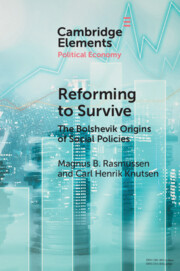Element contents
Reforming to Survive
Published online by Cambridge University Press: 02 December 2022
Summary
- Type
- Element
- Information
- Series: Elements in Political EconomyOnline ISBN: 9781108983334Publisher: Cambridge University PressPrint publication: 05 January 2023



